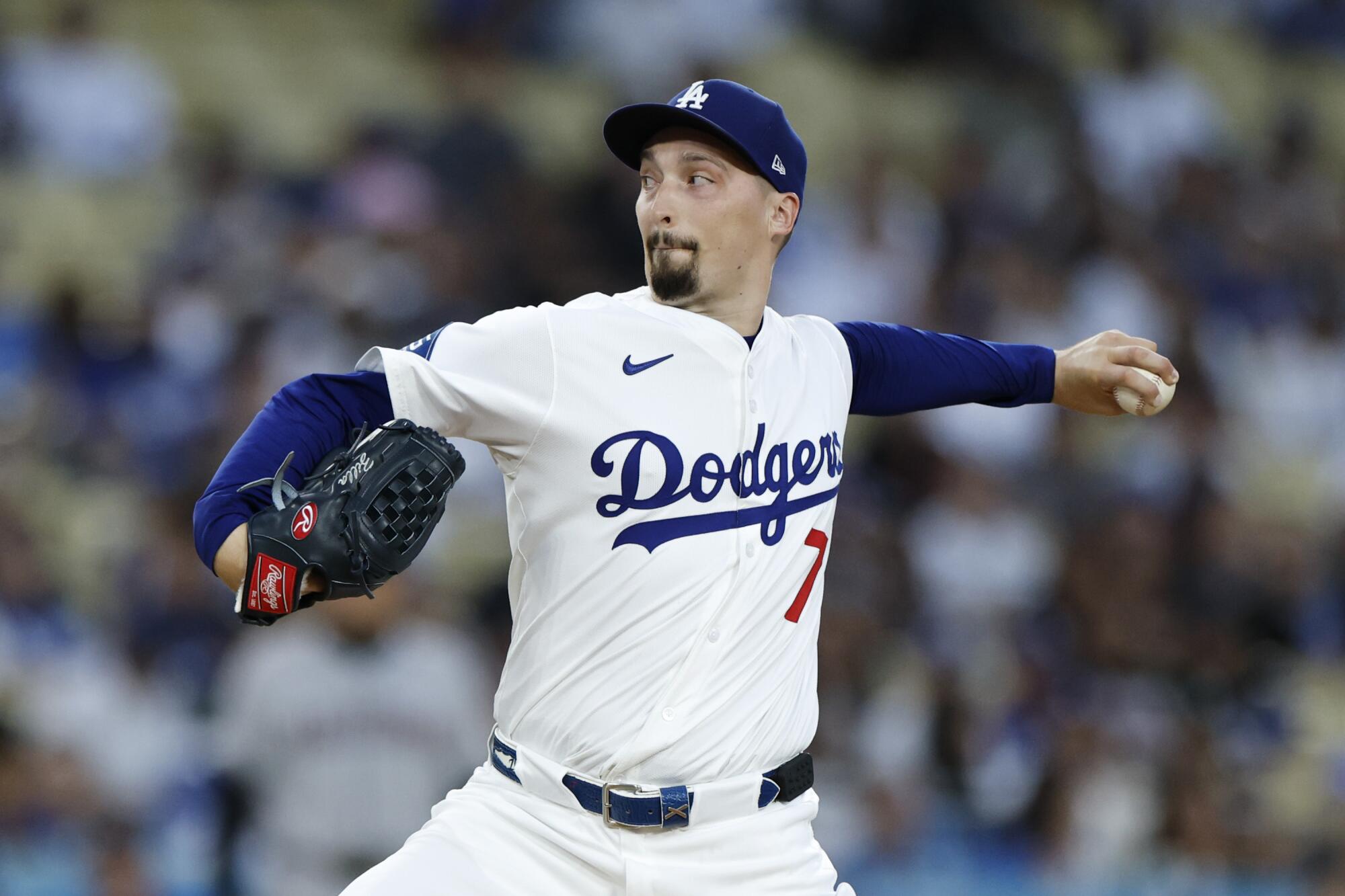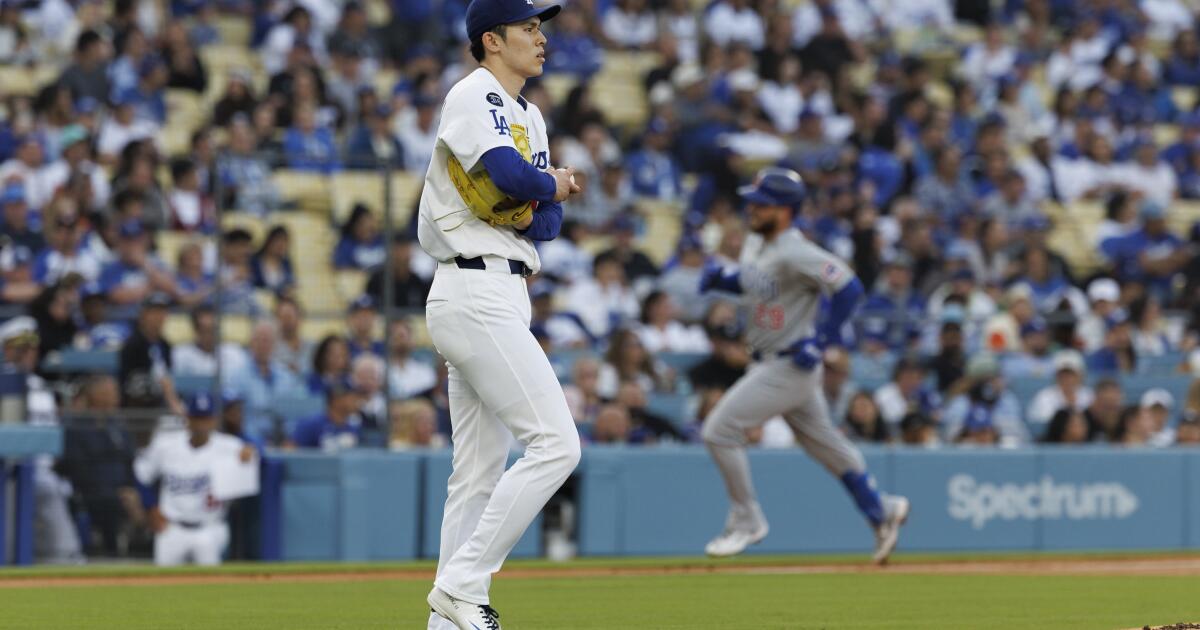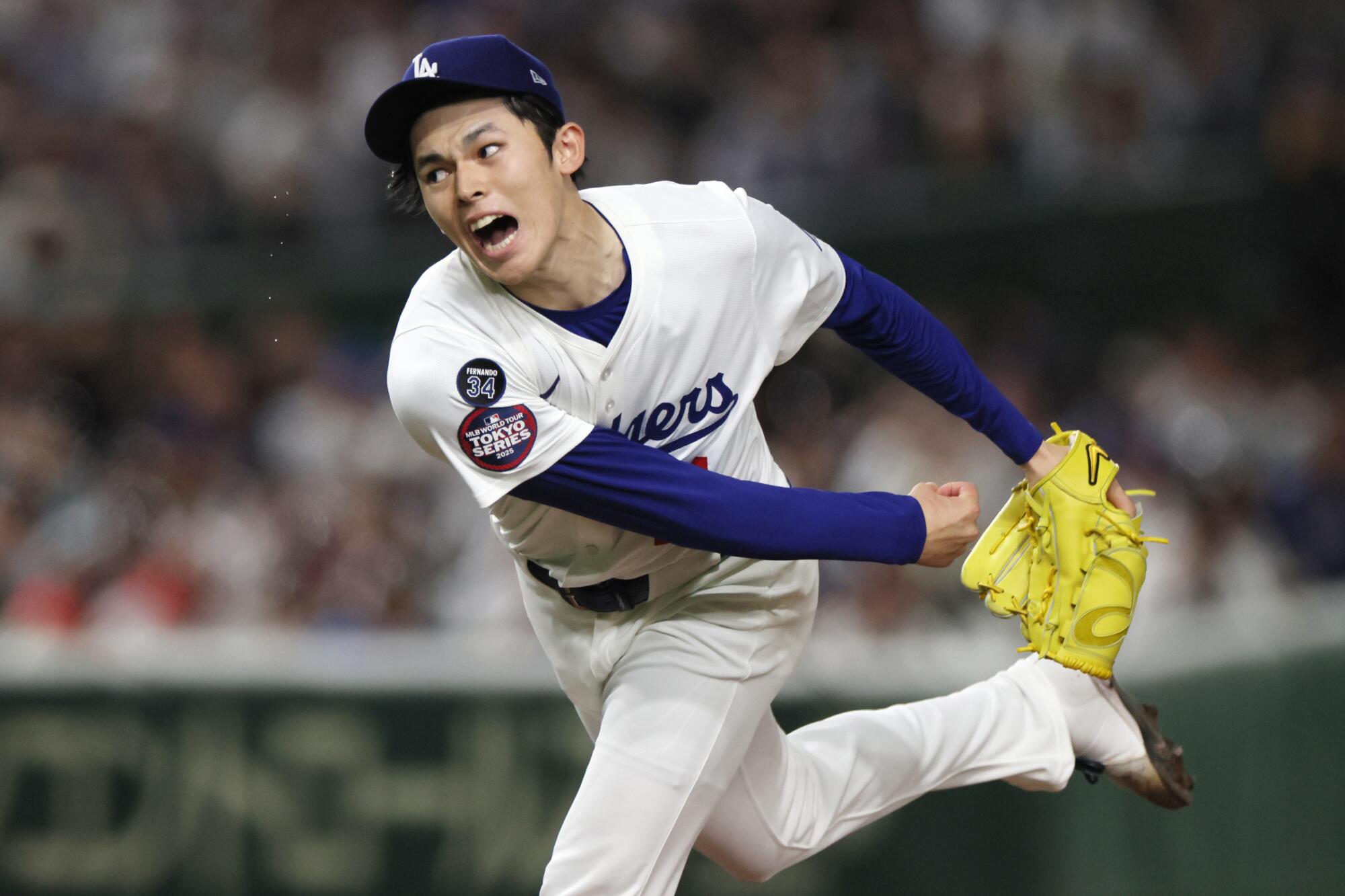Dodgers’ troubles at the plate strike again in loss to Diamondbacks
For both the Dodgers and San Diego Padres, the assignment over the next few weeks figured to be simple:
Take care of business and beat the teams you’re supposed to.
After all, the Dodgers are beginning a stretch of 15 straight games against clubs below .500. The Padres, meanwhile, will play 13 of their next 16 games against opponents with losing records, the lone exception being the 68-67 Cincinnati Reds.
It appeared to be an opportunity for each contender to stack up wins, build late-season momentum and try to wrest away control of a division race that the Dodgers currently lead by two games.
The only problem: They both flunked their first test on Friday.
Beating the bad teams, it turns out, isn’t always as easy as it seems.
In Los Angeles, the Dodgers suffered a lackluster 3-0 loss to the underperforming Arizona Diamondbacks, managing just three hits and getting only one runner in scoring position en route to suffering their seventh shutout this season. The Padres, meanwhile, were knocked around by the tanking Minnesota Twins in a 7-4 defeat earlier in the evening.
It meant, for one night, the standings remained static.
Instead of catapulting themselves into exceedingly soft portions of their schedules, both teams stumbled to equally disappointing results.
At Chavez Ravine, the Dodgers’ loss snapped their four-game winning streak — halting their recent upswing both on the mound and at the plate.
Starting pitcher Blake Snell gave up three runs in 5⅓ innings and battled through a stark drop in fastball velocity. After entering the night averaging 95.4 mph with his heater, Snell was stuck closer to 93 mph in his first start since the birth of his second child last weekend.
“I had a busy week, man. A lot going on,” Snell said of his velocity drop. “I’m not worried about [it]. I know what’s going on. So it’ll come back. I’m zero worried about it. I mean, I was aware of it. But I’m not gonna push it. It is what it is. It’s what I had today. Just gotta be better.”
Dodgers pitcher Blake Snell delivers in the first inning Friday against the Diamondbacks.
(Carlin Stiehl / Los Angeles Times)
Though he struck out eight batters and allowed only four hits, one of them was costly: a two-run home run by Blaze Alexander in the fourth, on a fastball over the plate that clocked in at only 93.4 mph. Snell’s night ended after two more knocks brought in a third run in the sixth, with Corbin Carroll hitting a leadoff double and scoring on Gabriel Moreno’s RBI single.
The bigger problem for the Dodgers (77-58), however, was their offense.
Arizona starter Zac Gallen entered the night in the midst of a dismal contract season, beginning play with a 5.13 earned-run average despite improved form in August. Against the Dodgers, though, he was lights out, yielding only two hits in six scoreless innings with eight strikeouts and three walks.
“We just obviously couldn’t figure anything out,” manager Dave Roberts said. “We just really couldn’t put anything together all night long.”
Indeed, even more troublesome was the Dodgers’ inability to generate much against the Diamondbacks’ bullpen — a woebegone unit that has spoiled Arizona’s playoff aspirations by ranking 26th in the majors with a 4.73 ERA.
Andy Pages managed a two-out single in the seventh but was left stranded. After that, the Dodgers’ only other baserunner came on a walk from Teoscar Hernández in the game’s penultimate at-bat.
“This was the first one in a while … that we’ve seen sort of a lackluster performance,” Roberts said, his club unable to extend its momentum after a sweep of the Reds. “Obviously you’ve got to give credit to Gallen, too. But it was one of those nights that I just didn’t see the at-bats that we’ve been seeing the last week.”
Of course, things didn’t go much better for the Padres (75-60) on Friday, either.

Before their game in Minnesota, the team announced that shortstop Xander Bogaerts was going on the injured list with a foot fracture, which could keep him out for the rest of the regular season. Then, Nestor Cortes followed up his six shutout innings against the Dodgers last week with a three-inning, three-run clunker that was punctuated with an ejection.
The night served as a missed opportunity for both NL West pace-setters; the Padres squandering a chance to cut the Dodgers’ two-game lead in half, only for the Dodgers to whiff on an opening to grow their lead at the top of the standings.
And in the coming days and weeks, both clubs will have to try to take care of business better. Because with no head-to-head matchups left between the Dodgers and Padres in the regular season, beating bad teams — and avoiding ugly losses like Friday’s — could dictate who ultimately wins the division.
“We’ve got to play well,” Roberts said. “Whether it’s the schedule or a tougher opponent, I don’t really think it matters. We got to go out and play good baseball and take good at-bats and just stack wins.”
Freeman, Call back in action
Despite the loss, the Dodgers did get good news on the injury front Friday, with both first baseman Freddie Freeman and outfielder Alex Call back in action after missing Wednesday’s game.
Freeman had been battling a neck stinger, but returned to the starting lineup and drew a walk in an otherwise 0-for-3 performance. Call avoided an IL stint after having a flare-up in his back on Tuesday, and came off the bench as a pinch-hitter for a groundout in the seventh.




